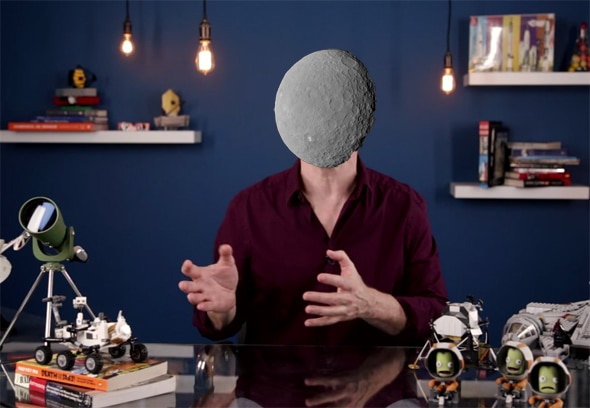Create a free profile to get unlimited access to exclusive videos, sweepstakes, and more!
Crash Course Astronomy: Asteroids

For this week’s Crash Course Astronomy episode, we take a skidding halt at the edge of the planetary solar system and scream back inward to the vast space between Mars and Jupiter.
Before I go on, I need to fess up to an error: I said that Earth’s Trojan asteroid, 2010 TK7, is 800 million km from Earth. I have no idea how I came up with that number; when it’s 60° ahead it’s about 150 million km ahead of us, and it wanders around to almost opposite the Sun from us, when it’s roughly 450 million km ahead (or 300 million miles if you could go straight there).
It’s funny to me how little errors like this can get through our vetting process, but as anyone knows who has ever written a script, book, or anything, sometimes booboos get through. I’ve actually been quite pleased at how few the final edits have.
As I mentioned in the video, we’re learning more about the largest asteroid, Ceres, every day. It has peculiar bright spots on it that may be ice deposits, but at this time no one is sure. The Dawn spacecraft just entered the first of its mapping orbits, so the science is really just now beginning. I suggest tuning into the Dawn mission blog to keep up with the latest results.
More generically, I’ve written about asteroids a bazillion times. Go here and keep yourself busy.
Finally, I’m honored to have an asteroid named after me: 165347 Philplait. It was discovered by my friend Jeff Medkeff, and is something like a kilometer across. The picture we showed in the video is from this article I wrote about it, and you can read the whole back story about Jeff, the discovery, and the naming. Jeff was a great guy, and I miss him.
My thanks to my friend Amy Mainzer who got those images of my asteroid for me. She is Principal Investigator for the NEOCam mission that will look for near-Earth asteroids, and is another person who, like me, just loves astronomy and asteroids so much she can’t shut up about them. Follow her on Twitter; she posts about asteroids and frequently puts up amazing images from the NEOWISE mission.
P.S. Sometime around when the Saturn episode came out, Crash Course Astronomy passed four million views. Holy wow. I love you guys.


























